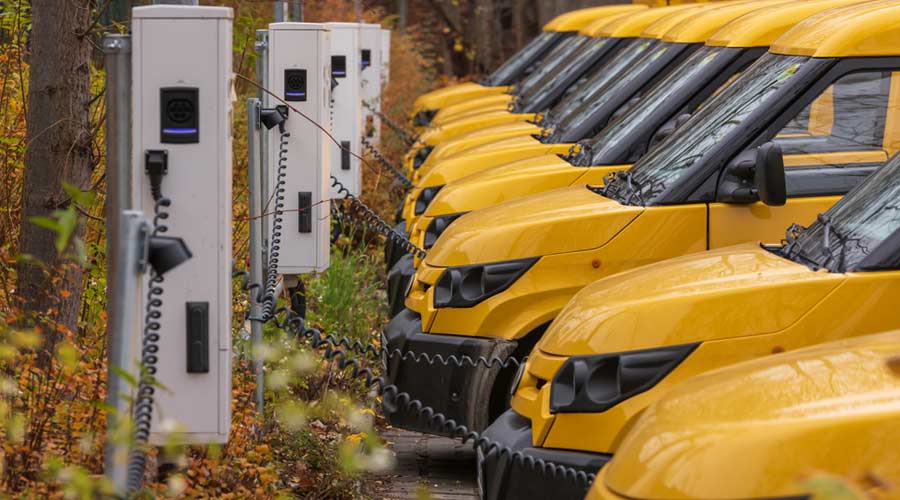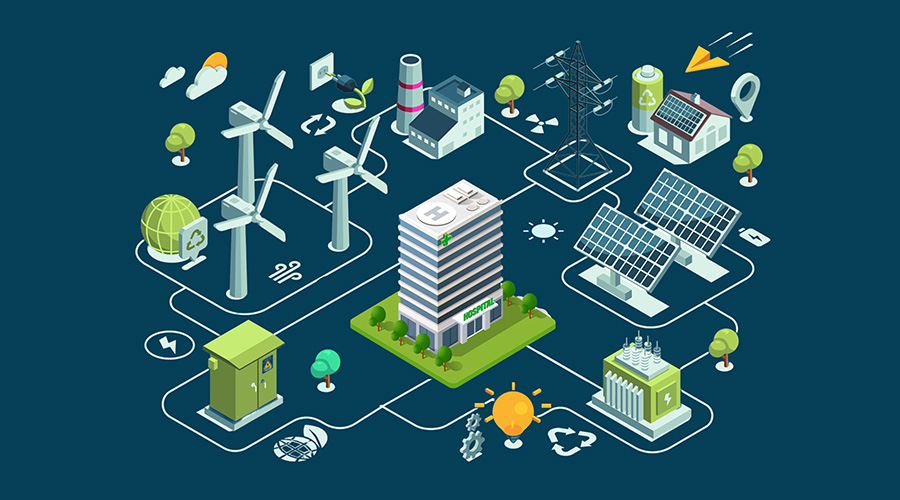Navigating the Hurdles of Electric Vehicle Fleet Conversion
Vehicle availability, battery technology and selling the investment among challenges managers face in converting fleet.
By Dave Lubach, Executive Editor
As government entities and institutional and commercial facilities strive to achieve decarbonization goals, one of the more significant pieces to the puzzle is the electrification of vehicle fleets.
The vehicles comprising the fleets can be all kinds – from standard cars and trucks to garbage trucks and mobile elevated work platforms and utility vehicles. But as fleet and operations managers are realizing, the transition isn’t as easy as flipping a switch and turning over a fleet overnight.
Managers must weigh budget concerns, vehicle availability and political differences, among other challenges. Another hurdle is technology. As commercial and institutional markets are in the early stages of making the transitions, many managers are finding occasional issues with batteries and establishing infrastructure. Travis Eckert, the electric vehicle team lead at MD Energy Advisors, discusses some of these challenges with facilitiesnet.com. The interview has been edited for length and clarity.
FacilitiesNet: When you’re in the early stages of transitioning your fleet to electric, what are some of the more important aspects of the transition?
Travis Eckert: The first is analyzing the current fleet. If you don’t have fuel data, and an Excel sheet with numbers, you should absolutely not start anything else until you have that. It’s really about gathering the current fleet information and understanding how those vehicles are used. Another is spending time with a partner, a financial person, whoever is in governmental affairs, and looking into all of the incentives. There’s a lot of funding out there and you could miss an opportunity by making a purchase and not fully understanding what the incentives are. There could be a tax credit, but there could also be an alternative fuels grant through your state’s energy administration. The third is the infrastructure. Digging into the infrastructure that’s going to be needed and planning that in a well-thought-out manner, not just saying OK, we’ll buy this brand charging station and then we’ll put it here, and someone else over here buys this different brand charging station, and then you have something that doesn’t work, and this one doesn’t connect to this one.
FacilitiesNet: How much of an impact can commercial and institutional fleets have on the environment?
Eckert: It’s hard not to be optimistic about this space and the environmental impact. Having diesel buses or mail trucks from the 80s driving around in the community, fleets are an amazing way to really move the needle on emissions reductions. As a consumer you’re talking one or two (electric) cars at a time, and that’s all the influence they can have, but with a fleet it can be 10 or 20 vehicles, or 100. So, I’m very excited about the opportunities, and we’re starting to move forward.
FacilitiesNet: What are some of the bigger challenges that facilities or municipalities have when transitioning their fleets?
Eckert: You have all these different stakeholders, so there’s a financial side of it. Do the people who write the checks know what the total cost of ownership is? What are the incentives to do it for a public fleet for a municipality or a school district? A facility like that typically has access to several funding sources like grants, pilot projects with utilities, sometimes on the infrastructure side, so sometimes they have a little bit more available than to a private fleet. Then you have the energy side, energy managers, wondering what this does to our utility prices, or how do we get that amount of power to the site? Then you have the ESG (environmental, social, governance) side as well. Those are all different people. And those are all different conversations. How do you get all these people to the table, and how do you find the solution that makes sense over time? It’s never overnight, ripping the Band-Aid off and dumping your fleet and buying all electric vehicles tomorrow. This transition is over five to 10 years.
FacilitiesNet: What are some myths and misconceptions about electric vehicles that are out there?
Eckert: One of the more common that’s been popping up is just general misconceptions regarding the environmental impact of an EV. That’s one we see a lot. Also, the batteries themselves. (EV opponents) will show a picture of a copper mine, which is not the lithium battery mine, and say, ‘Look how destructive this is to the earth.’ With cobalt and playing up the example of child labor in certain parts of the world for mining, most EV batteries don’t have cobalt in them anymore. The other common one is just that batteries aren’t going to last. Battery technology in 2023 is far more advanced. Another one is range. It’s a challenge and I wouldn’t say that’s always a misconception. Sometimes, that’s a fair argument, but the vast majority of vehicles out there can accomplish what they need to.
FacilitiesNet: How do you decide what vehicles to focus on when converting your fleet to EVs?
Eckert: Vehicle availability can be a challenge. It’s getting better and every year there’s more vehicles coming on the market. This kind of sounds like an oversimplification, but really our recommendation is, typically, let’s start where we can. Let’s start converting the vehicles that can be converted right now. The motor pool can be converted right now, so let’s focus on that. And then over the years, we can start transitioning those more challenging vehicles or use pilot programs, for example, for garbage trucks. Instead of maybe doing all of them, we try to do one or two and test it and then adjust in the future.
Dave Lubach is executive editor of the facility market.
Related Topics:












